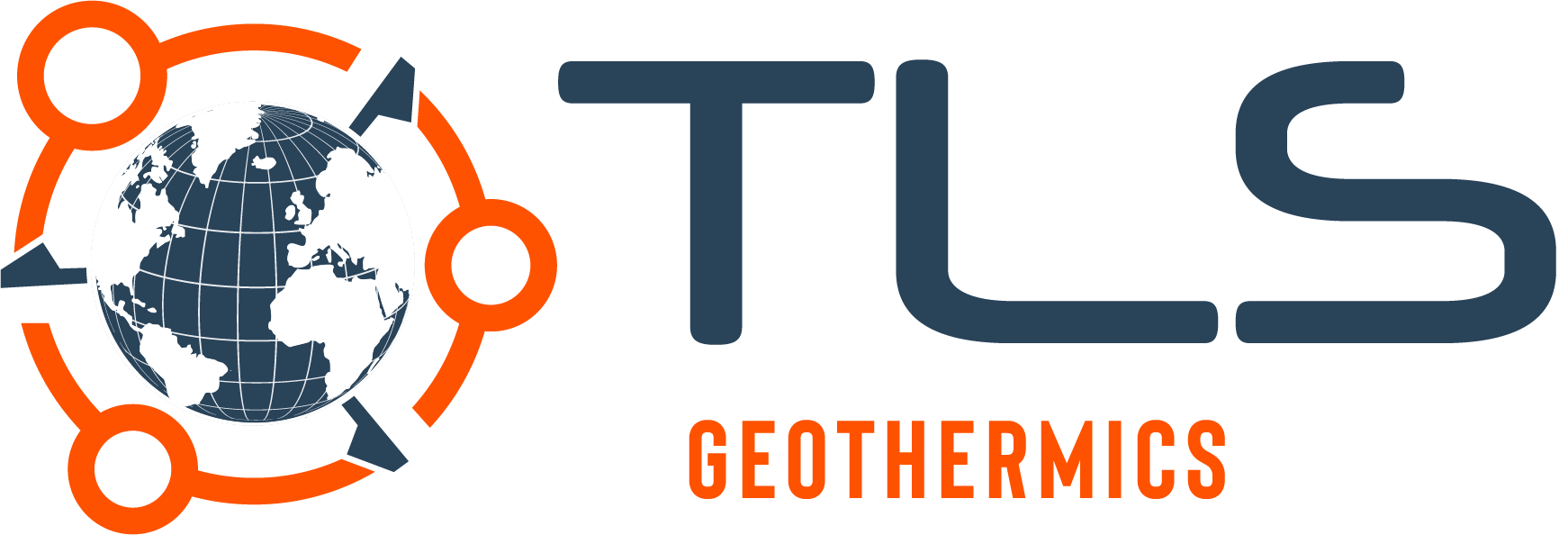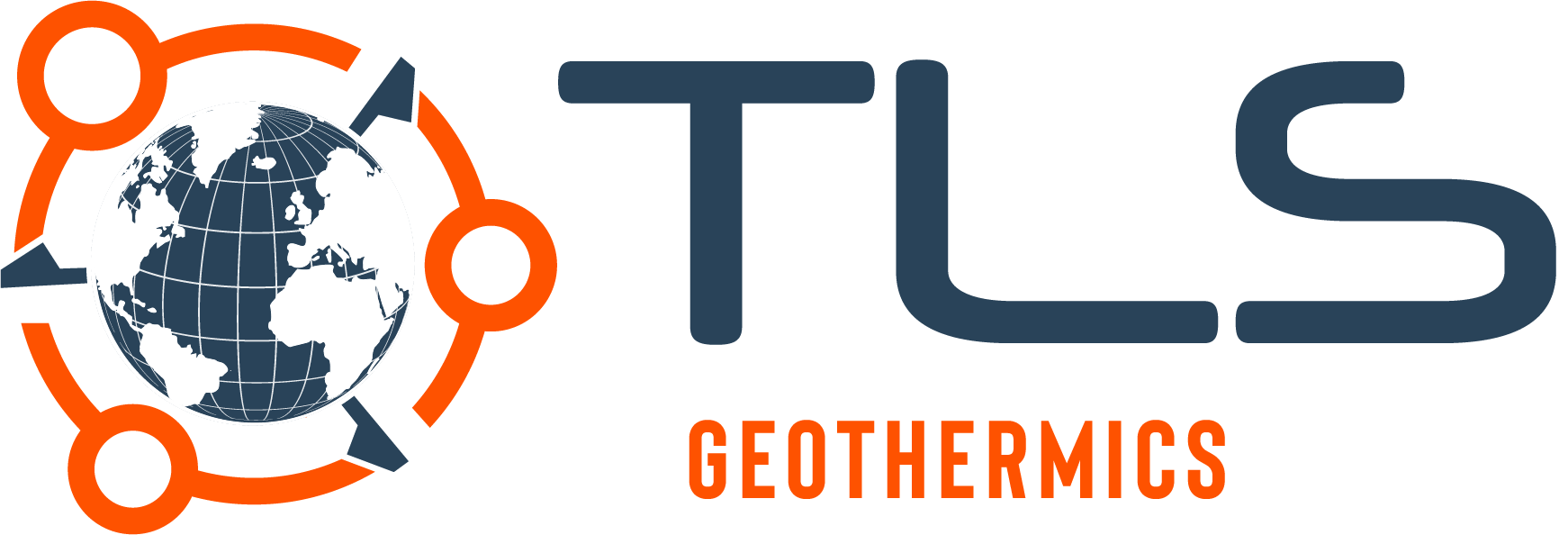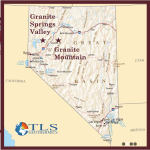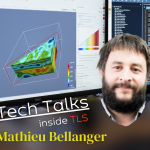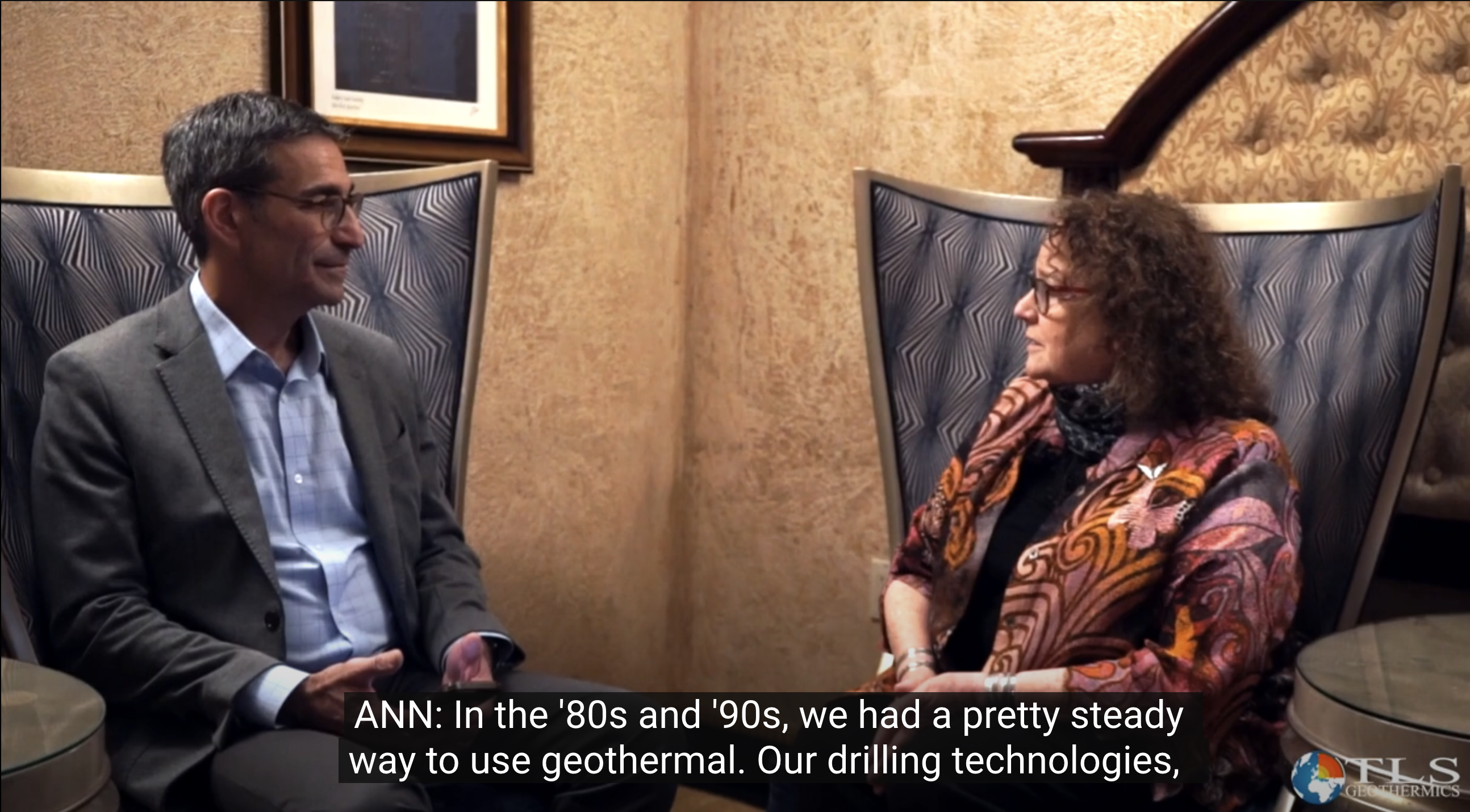
“Profound People” – Geothermal Leadership EP 1
“Insights from geothermal superheroes”
🌍 Exciting News from TLS GEOTHERMICS! We’re thrilled to announce the launch of our ‘Profound People’ conversation series – an intimate space for sharing wisdom and insights from luminaries and leaders of our Geothermal community.
Celebrating successes, reflecting on challenges, and uncovering massive opportunities in-between the lines.
Kicking off this journey, we’re honored to have Ann Robertson-Tait from GeothermEx Inc., a champion in the geothermal arena with a 39-year tenure. Ann’s expertise spans resource evaluation, risk mitigation, and pioneering project development. She’s been a pivotal force in over a hundred projects across 50 countries, contributing to an impressive 7+GW of clean geothermal power generation.
We invite you to join this enlightening conversation. Tune in, gain invaluable insights, and witness the fusion of geoscience and innovation. Subscribe to our channel for more!
🤝 We’re eager to hear from you – share your thoughts, connect with us, and nominate your favorite Geothermal Profound People. Together, let’s celebrate and amplify the voices that are propelling us towards a cleaner, sustainable energy future.
Link to our Profound People Video Series on Youtube
Link to Ann Robertson-Tait: https://lnkd.in/gi-C-QR5
Audi Only:
Transcript:
This conversation begins our educational series “Profound People” featuring serious contributors to the Geothermal industry and community. Today we connect with
Ann Roberston-Tait “Boss” of Geothermex and 40 year committed member of the Clean Energy team. Enjoy the reading and let us know who you would nominate as our next featured contributor to our Geothermal community.
BRUCE: Hi everyone, I’m Bruce Korn from TLS Geothermics. We are here in Reno at the conclusion of the GRC conference, another excellent conference this year. Thanks for joining this conversation with Ann Robertson-Tait.
ANN: Hello, I’m a geologist and have been working in the geothermal sector since 1985. I decided oil and gas weren’t for me, but geothermal sounded like a good idea. So, I started working at Geothermics after earning my master’s degree in geology at the University of Auckland in New Zealand, and I’ve never looked back. It’s been a great ride all the way. Now, I’m the boss of GeothermEx. It’s been a while, but I’m glad I got here. I’ll just note that we are part of SLB, formerly known as Schlumberger.
BRUCE: One of my first questions is about the evolution and adaptation of new technologies into geothermal. How has that changed since the 1980s?
ANN: In the ’80s and ’90s, we had a pretty steady way to use geothermal. Our drilling technologies, our exploration technologies, were known and relatively simple. We keep our wells simple and our projects economic by doing so. But now, what we’re seeing is a real adaptation of oil and gas technology to geothermal and the advent of much higher temperature tools. This allows us to drill deeper, better, faster, and receive more value from each well we drill. We can target the wells better and make a more efficient project for power generation, which is what we focus on at GeothermEx.
The fact that oil and gas have high temperature, high-pressure resources that they’re using has really helped the geothermal industry, kind of piggybacking on that. But there’s also new technology in geothermal that’s coming up, for example, in geophysical techniques and airborne analyses, and other things that help us do better in our well targeting and production.
BRUCE: How are oil and gas and geothermal related?
ANN: There are more similarities than differences, I would say.
Both are extractive industries, both dealing with the subsurface, trying to get things out of the ground, both drilling wells for different reasons. In fact, all of the drilling technology really comes from oil and gas. Geothermal uses the same technology; we drill bigger wells, but other than that, it’s quite the same. But as oil and gas technology evolves, we’ve been able to take advantage of certain things that have come out of that.
BRUCE: Basically, we’re looking for hot water, right?
ANN: Yes, and you may know, hot water has a much lower energy content than oil or gas. So, that’s what explains the value differential. Nevertheless, it’s a great resource. What you do in a geothermal project is you drill the wells upfront, and then you start your power plant. So, we have basically all the fuel available in advance. We don’t have to rely on importing gas or burning something else like coal to get the power. We have this fuel source that’s already established in the ground. Geothermal is a 24/7 clean, baseload power source, and that’s something that has a lot of value today, given the penetration of intermittent resources like solar and wind, which are great.
But what has happened in recent years is that geothermal has become more popular. Still, there’s a phrase that’s being used a lot, which is “cheaper fuel,” meaning oil and gas, or maybe coal, is cheaper than geothermal energy. But that word “cheaper” doesn’t account for the impacts that come from oil and gas and coal. We see those impacts growing on our planet, and we need to do something about it. So, I think the value proposition is based on something of a false premise.
ANN: Solar power works when the sun is out; wind power works when the wind is blowing. But what about the rest of the time? Those two technologies, which are excellent, are fairly simple to develop. You put out some meteorological stations, understand how much sun there is over the year, how many days are cloudy, you know the wind speeds. So, that’s kind of their exploration. But for us, we have to do a lot of exploration on and under the ground to find out where this resource is and to understand how big it might be or how much power it could produce. So, that part is different. But the value, as I said, to be able to produce all the time, is really a significant value that geothermal has.
Right now, for example, in the state of California, there’s so much solar penetration that the electrical grid has become unstable. That has led to a mandate from the California Public Utilities Commission to install 2 GW more of geothermal in California just to balance things out and make the distribution of electricity easier.
There are certain resources that are called hidden or blind resources because they don’t have any thermal manifestations, like hot springs or steam vents. But geothermal systems are dynamic; they have a hot zone that flows upward because it’s lighter, it’s buoyant, it’s hot, and it wants to come out of the ground. Normally, that’s why you have hot springs. What we geologists, geochemists, and geophysicists do is to say, “Okay, there are those hot springs; how can we trace that back down into the Earth and understand what the plumbing is down deep where we can tap that fluid?”
The economics of geothermal energy haven’t changed too much, but there are improved techniques that allow us to have more success in drilling wells. Those technologies are advancing all the time, so we get better at looking into the subsurface without drilling or before we drill, and that’s improving the economics. The other thing today that is improving the economics a lot is the Inflation Reduction Act, which has provided incentives for geothermal projects and other renewable energy projects too, in the form of tax credits. So, if you’re building a geothermal project and you pay taxes on it, you get income tax credit for that. You have an opportunity to not pay that tax through these tax credits. If you don’t have a big tax bill, let’s say you’re a new operator to the space, there are ways to monetize those tax credits. For example, you can sell them to another party, as long as it’s not a power plant or some power-producing entity, and in some cases, you can get a direct payment for those tax credits. So, this is something that’s really driving growth in the United States right now, and what it’s doing is enabling more people to come into the industry and more projects to be developed.
But there is new technology coming from within the geothermal industry too, novel ways to produce heat out of the ground. I mean, we all know that our Earth is really hot, and there’s probably more energy in the earth than we could ever use, but how to get it out? There are novel ways of getting it out, like closed-loop systems, like enhanced geothermal systems. So, the rock isn’t producing enough fluid, you know, water, hot water, out of the earth. So, we have to help it along by stimulating the wells, or in the closed-loop scenario, not withdrawing any water from the Earth but simply using heat conduction as a method to generate geothermal energy. So, things like this are advancing as we speak.
BRUCE: You’ve worked all over the world, yes? Tell me one place that just stands out in your mind for whatever reason?
ANN: So, Indonesia is an island arc; it’s full of volcanoes, it has a lot of geothermal resources, and we’ve worked on many projects there. The reason I picked this is not only because it’s a country with a lot of potential and a lot of installed capacity in geothermal, but also, it’s helping them work their way towards clean energy, but also, we have a great client base there.
I wanted to tell you about a project in which the operator thought, or had estimated, they might have a resource of a couple hundred megawatts, which is quite big for geothermal. But these volcanic systems can be big. So, they had drilled some wells, and we were asked to evaluate those. We didn’t see anything like 200 megawatts from those six wells, their very first wells they drilled in this field, e saw a lot less. So, I was given the task of telling the customer the bad news. Not only were they there, they had their lenders, their equity partners, all their senior team from the resource and the power plant side, and it was really rough.
But in my most compassionate way that I could muster, I said, “Look, we don’t see this from these six wells, but you know, you have one area that looks very good, and if you drilled more wells there, the story will change.” As they drilled, in fact, it did change. But I was worried that this customer would not want to work with us anymore. The next year, when I saw the customer, I actually asked him, the lead person, the CEO of the company, “I thought you’d never talk to us again.” And he said, “No, no, you told us the truth, you told us your truth, and you were right. Now we’ve drilled there.” And by the way, during that meeting, that very tense meeting, the power plant guys, they came up with some solutions too. They said, “Hey, we could put another flash cycle onto this plant, and we get a little more energy out of it, and we might increase to 80 or 90 megawatts.”
Anyway, that project today is producing 120 megawatts, and they’re having a second phase being built. So, we came through the adversity, and the customer was happy, even though we had to deliver bad news. So, I think that’s a story that basically shows the resilience of people in the geothermal energy business and the value of honest evaluations, which is what GeothermEx is known for.
BRUCE: Right, so that’s a great story. This has been a fun conversation, definitely a story.
ANN: And there are many more, but I think we have enough for today. Maybe another time. Really, thanks, Bruce. It’s really a pleasure to talk about geothermal energy.
